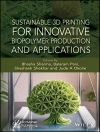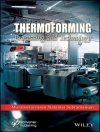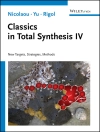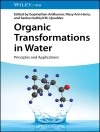Authored by one of the world?s leading synthetic chemists in the field, this reference presents modern enolate chemistry with an emphasis on metal O-enolates in asymmetric synthesis.
While great care is taken to cover novel, successful concepts, such classical methods as the famous Evans enolates are equally highlighted. Throughout the book representative reaction procedures are presented, thus helping readers to find the best solution for their own synthetic problem.
Of high interest to synthetic chemists in academia, as well as the pharmaceuticals, agrochemicals and fine chemicals industries.
Spis treści
Preface VII
1 Introductory Remarks 1
References 7
2 General Methods for the Preparation of Enolates 11
2.1 Enolate Formation by Deprotonation 11
2.2 Enolate Formation by Conjugate Addition to α, β-Unsaturated Carbonyl Compounds 51
2.3 Alkali Metal Enolates by Cleavage of Enol Acetates or Silyl Enol Ethers 60
2.4 Enolates from Ketenes and Organolithium Compounds 62
2.5 Enolates from α-Halogen-Substituted Carbonyl Compounds by Halogen–Metal Exchange 63
2.6 Formation of Enolates by Transmetallation 65
2.7 Enolates by Miscellaneous Methods 70
References 72
3 Structures of Enolates 83
3.1 Enolates of Alkali and Alkaline Earth Metals 83
3.2 Enolates of Other Main Group Metals 98
3.3 Transition Metal Enolates 100
References 109
4 Enolates with Chiral Auxiliaries in Asymmetric Syntheses 115
4.1 Auxiliary-Based Alkylation of Enolates 116
4.2 Auxiliary-Based Arylation of Enolates 144
4.3 Auxiliary-Based Aldol, Vinylogous Aldol, and Reformatsky Reactions 147
4.4 Auxiliary-Based Mannich Reactions and Ester Enolate-Imine Condensations 202
4.5 Auxiliary-Based Conjugate Additions 214
4.6 Auxiliary-Based Oxidation of Enolates 227
References 242
5 Enolates in Asymmetric Catalysis 257
5.1 Enantioselective Catalysis in Alkylations and Allylations of Enolates 257
5.2 Enantioselective Catalysis for Enolate Arylation 300
5.3 Catalytic, Enantioselective Aldol, Vinylogous Aldol, and Reformatsky Reactions 309
5.4 Catalytic Enantioselective Mannich Reactions, Ester Enolate–Imine Condensations, and Imine Reformatsky Reactions 352
5.5 Catalytic Enantioselective Conjugate Additions 369
5.6 Enantioselective Protonation of Enolates 385
5.7 Enantioselective Oxidation of Enolates 394
References 408
List of Procedures 423
Index 437
O autorze
Manfred Braun was born in Schwalbach near Saarlouis in 1948. From 1966 until 1971 he studied chemistry at the university (TH) of Karlsruhe, and in 1975 he completed his doctorate under D. Seebach at the Justus-Liebig university of Giessen. After his postdoctoral studies with G. Buchi at the Massachusetts Institute of Technology in 1975 and 1976 he joined H. Musso’s research group at the university of Karlsruhe and completed the habilitation there in 1981. Since 1985 he has been a professor of organic chemistry at the Heinrich-Heine university in Dusseldorf. He received the Heisenberg scholarship from the Deutsche Forschungsgemeinschaft and the Karl Winnacker scholarship. Guest professorships led him to the Universite de Rennes, France and the University of Wisconsin in Madison, USA. His current research interests include the development of new synthetic methods, especially for asymmetric synthesis, organometallic chemistry, and syntheses of natural products, and biologically active compounds.












